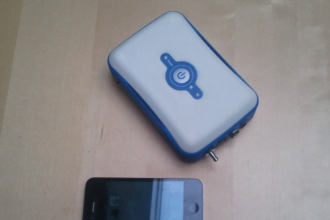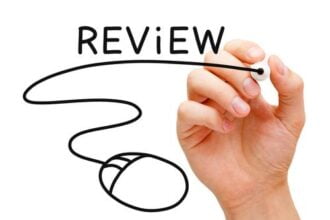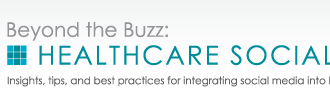It has been 3 years since the cHealth blog entered the blogosphere, and it’s been a lot of fun. I recently looked back to see if there are highlights or trends in my posts and/or if my thinking or communication had changed dramatically in 3 years. Although not dramatic, if you look at these writings over time, you can see a meaningful shift in thinking. With that background in mind, here is an attempt to stitch together a narrative of the last 3 years worth of posts.
It has been 3 years since the cHealth blog entered the blogosphere, and it’s been a lot of fun. I recently looked back to see if there are highlights or trends in my posts and/or if my thinking or communication had changed dramatically in 3 years. Although not dramatic, if you look at these writings over time, you can see a meaningful shift in thinking. With that background in mind, here is an attempt to stitch together a narrative of the last 3 years worth of posts.
Provider-centric use of connected health
The early themes hit upon just-in-time care, and patient accountability and ownership. Here are a few quotes from that first year:
- Accountability can be viewed as reining in freedom and no politician wants to remind their constituents that individuals are in control of unhealthy behaviors. It’s much easier to be in favor of programs that guarantee care to victims…..
- Imagine a world where a provider can tell you with near certainty how you will respond to a certain medication (typically we hear things like ‘you have a 60% chance of X outcome’) or with great certainty what your risk of contracting a certain condition is…. For so much of our health forecasting, knowing our specific genetic make up will change that….Now consider the implications of connected health. By collecting objective measurable information about you and sharing it with you to inform your self-knowledge and improve your health behaviors, we are improving patient adherence, better engaging patients in their care, and helping clinicians improve clinical outcomes. Here again, highly individualized information, in this instance, is changing how we deliver care….
- We recently did some phone outreach to those individuals who were asked by their doctor to join the program, but did not participate…. I was fascinated by some of the reasons these folks gave for not adhering to their doctor’s advice. Here are some notes from the staff member who called these individuals:
- “Patient said it is just too much work for him to do. The doctor checks on him anyway.”
- “Patient said that she does not think it is necessary for her to upload (she has done it before) because Dr. XXX does not look at the readings, and she sees him every 8 weeks anyway.”
- “Spoke with patient, who said she just “hasn’t gotten to set it up yet.” She just forgets….”
A new and durable theme appeared in a post in October of 2010, that of Automated Care. This idea — that we must extend our provider base across more patient demand, emphasizing that patients must feel cared for and outcomes must improve — has persisted as a theme since:
- Let’s call this phenomenon Emotional Automation. Let’s start a dialogue about it. Is it far fetched to think that we could parse provider work flow into those actions that truly require a real-time interaction with a provider and delegate others to technology? Can we set up systems that are extensions of our providers that will allow patients to feel cared for by their doctor but be interacting with a piece of software or a robot?….
- Our work in connected health has shown that engagement with measured information about oneself is variable and unpredictable. On the one hand, we have the ‘quantified selfers’ who are forever measuring data about their health, reporting it out and adjusting lifestyle to be more healthy – very thermostat like. On the other, we have patients that we’ve cared for at our Center who are completely disinterested in measuring and learning from biometric information, regardless of how much their doctor recommends it or how much their health will benefit.
- Can we take advantage of some of those “Darwinian buttons” that deceive us into believing we’re interacting with a person rather than a technology and combine them with some of Cialdini’s persuasive techniques with the hope of delivering compelling, motivational health-related messaging to individuals?
- In a study conducted at the Center for Connected Health where we measured adherence to activity goals, individuals who had three times/week meetings with a computerized relational agent (courtesy of Tim Bickmore, Northeastern University) had almost three times the adherence to their step count goals as did those in a control group…..
- I think the right healthcare slogan should be the same as Esurance, “technology when you want it, people when you don’t.” But our charge as connected health entrepreneurs is to create solutions that offer our patients such a compelling experience that they choose technology over people, whenever it makes sense….
Introducing analytics and genetic data into the conversation
The shift to our current thinking on connected health design is seen in writing that starts mid 2012 and continues today:
- Connected health does this too. It is the ‘phenotypic map’ that corresponds to the detailed ‘genotypic map’ the geneticists come up with. Consider if we have a population of workers and we want to incent them to be more active. Connected health can provide, at a minimum, a very precise measurement of the outcome. It enables folks who are investing in the program to see — both at a population and individual level — whether the program is resulting in increased activity.
- To sum it up then, wear and forget sensors generating automatically uploaded data provide feedback loops and insights whereas customized motivational psychology tools create the environment for sustained behavior change.
This thinking is still in force at CCH as we design the next generation of connected health programs:
- I recently became intrigued with free text analysis as a tool to learn more about an individual’s health. Tools like Wordle and Mirror.me are among the many that enable you to create interesting graphics of text. The words that are mentioned more frequently in any block of text are featured more prominently in the graphic…. I’m intrigued because of my belief that analyses like this are probably a more accurate barometer of someone’s health than what we’d learn if we asked anyone of us a series of questions. We want to look good for others and we tend to report ourselves as being healthier than we are. This phenomenon is well studied and referred to as Social Desirability Bias….
- Feedback loops plus varied, contextual messaging are much more powerful than feedback loops alone.
- Our current understanding of the power of connected health as an agent of behavior change includes the power of feedback loops as tools to drive awareness, accountability and goal setting. Layered over these feedback loops are targeted, personalized motivational messages that will drive behavior change, adherence and engagement. Various inputs such as an understanding of one’s state of motivation, one’s phenotypic data such as real-time biometric inputs and one’s genetic data will be combined and analyzed to create these personalized motivational messages.
- If we do it right, we will be able to create a world where patients and consumers can and will take charge of their own health, improving population-level health, consumer health satisfaction and lowering the societal expenditure on health.
It’s been fun blogging. I look forward to many more years and I thank each of my loyal readers for your comments and insights. I’ve learned a great deal from communicating with you through this medium.
![]()







